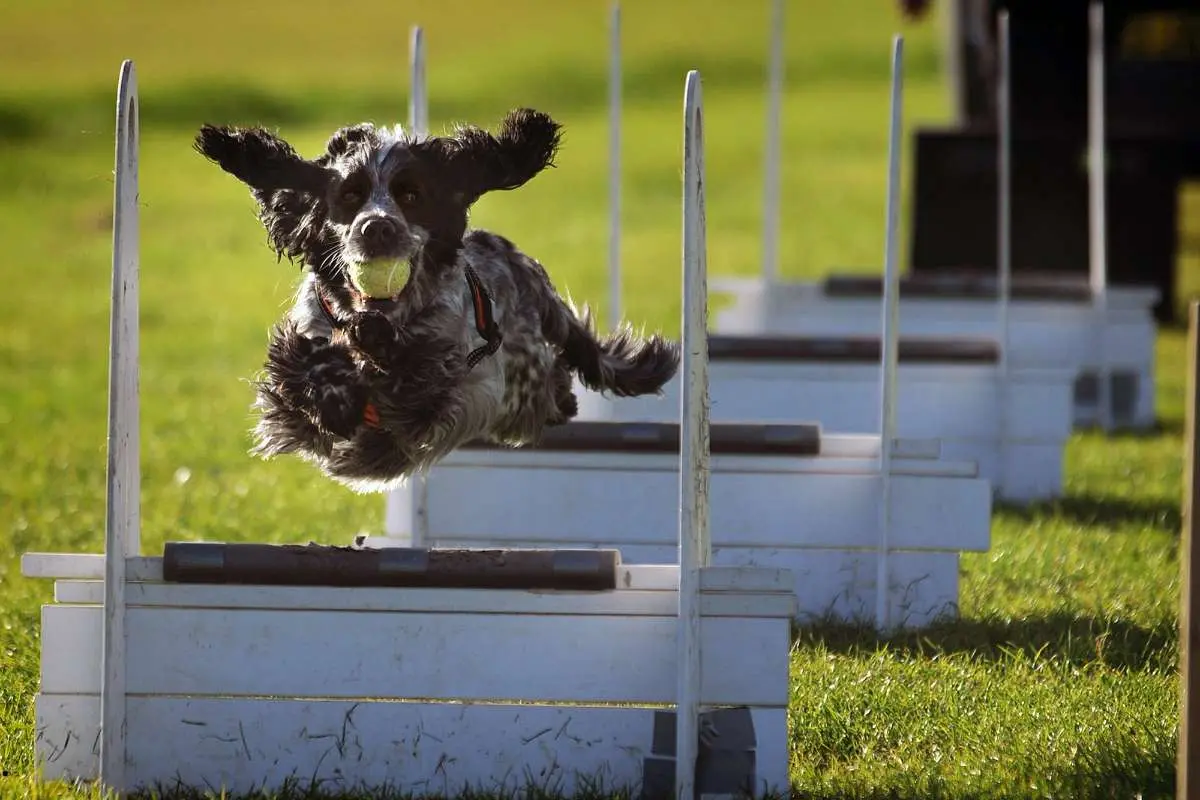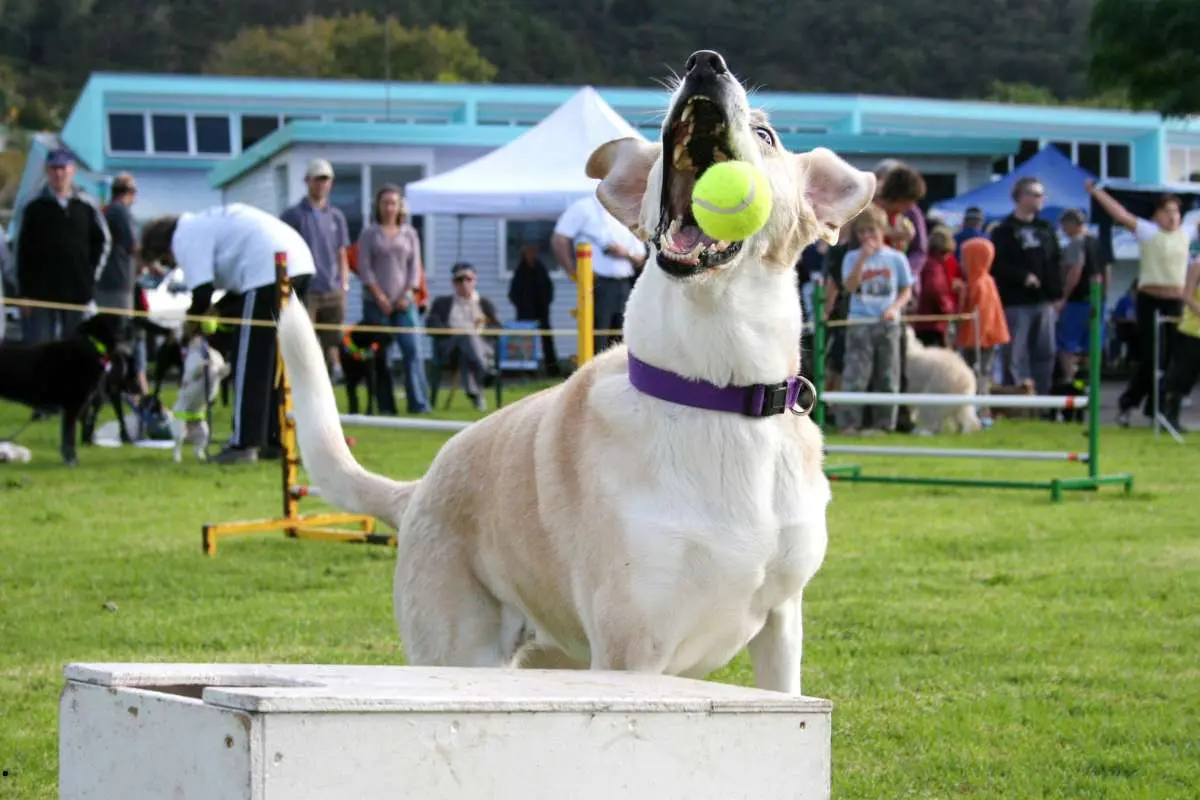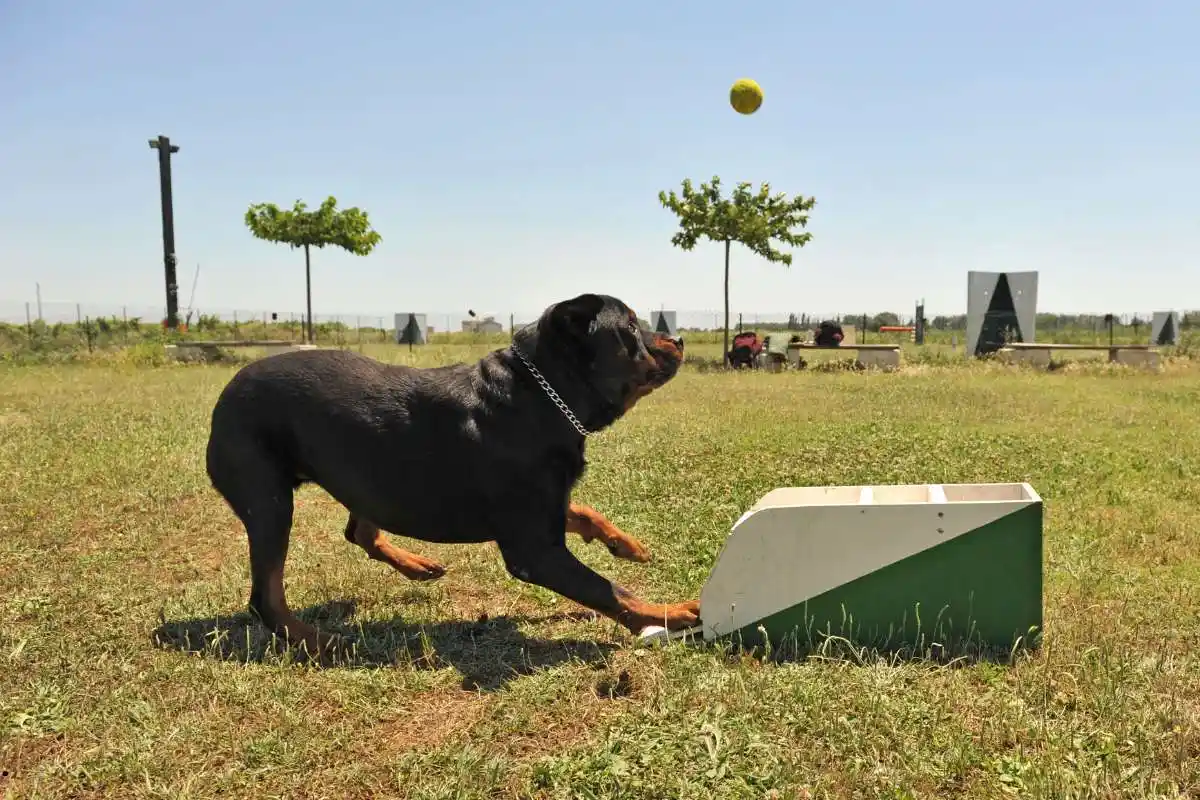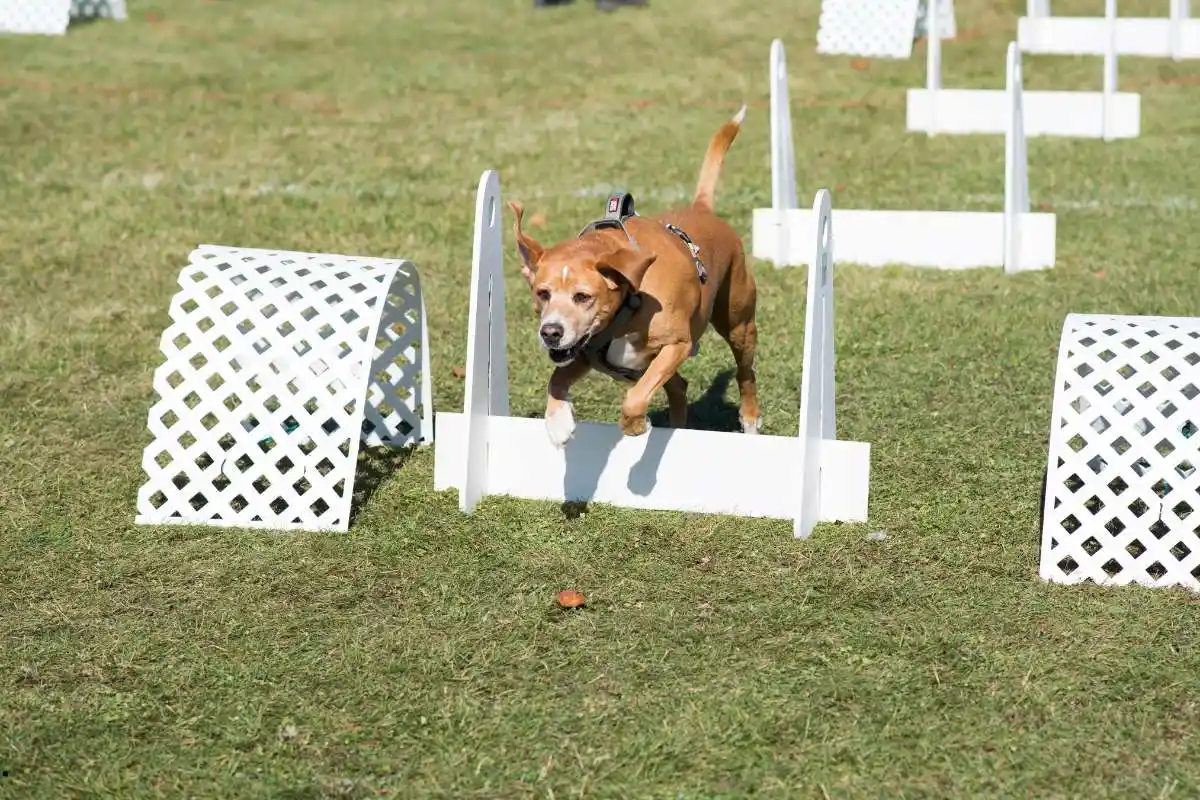Flyball is an exciting dog sport that involves teams of four-legged competitors racing against each other over hurdles to retrieve a ball and bring it back to their handlers. While Flyball can be a fun and rewarding activity for both dogs and their owners, it’s important to consider the potential risks and concerns associated with this high-intensity sport. One question that often comes up is whether Flyball can hurt dogs in any way.
When done properly and with proper training and supervision, Flyball should not inherently hurt dogs. However, there are certain factors to consider to ensure the safety and well-being of your furry teammate during training and competition. In this guide, we will explore the potential risks associated with Flyball and provide tips on how to keep your dog safe and healthy while participating in this exhilarating sport.
Understanding Flyball
Definition and History of Flyball
A popular dog sport that involves agility and speed, flyball is a relay race in which teams of dogs race against each other over hurdles to retrieve a tennis ball. While the sport originated in the late 1960s in Southern California, it has since gained popularity worldwide as an exciting and fast-paced competition for dogs and their handlers.
The Basic Rules of Flyball Competitions
Flyball competitions typically consist of teams of four dogs each, with the goal being for each dog to race down a lane, jump over hurdles, trigger a box to release a tennis ball, and then return with the ball to the handler. To win, a team must have all four dogs successfully complete the course in the fastest time possible.
To ensure fair competition, flyball competitions are governed by specific rules and regulations set by organizations such as the North American Flyball Association (NAFA) and the United Flyball League International (U-FLI).

Types of Dogs That Participate in Flyball
Even though any dog can potentially participate in flyball, certain breeds are more commonly seen excelling in this sport. With their high energy levels, intelligence, and agility, breeds such as Border Collies, Whippets, Jack Russell Terriers, and Australian Shepherds are often top contenders in flyball competitions.
| Border Collie | Known for their speed and agility |
| Whippet | Fast runners with a strong prey drive |
| Jack Russell Terrier | Small but mighty dogs known for their determination |
| Australian Shepherd | Highly intelligent and versatile dogs |
| After all, success in flyball requires a combination of speed, agility, and teamwork between the dog and handler. |
Preparing Your Dog for Flyball
Assessing Your Dog’s Suitability for the Sport
Your dog’s health and temperament play crucial roles in determining their suitability for flyball. Physical fitness, agility, and drive are key factors to consider. In addition, assessing your dog’s willingness to learn new skills and work as part of a team is crucial.
Step-by-Step Guide to Basic Training
| Phase 1 | Phase 2 |
| Introduce your dog to the flyball equipment and teach them basic commands. | Progressively increase the speed and distance of the retrieves, focusing on accuracy and speed. |
The key to successful flyball training is consistency, positive reinforcement, and patience. Building a strong foundation of basic commands and good recall is crucial for your dog’s success in the sport.
Tips for Enhancing Your Dog’s Physical Fitness
For instance, incorporating regular exercise sessions and engaging in activities that promote muscle strength and endurance can significantly improve your dog’s performance in flyball. Perceiving their physical limits and gradually increasing the intensity of their workouts will prevent injuries and build stamina.

Flyball
- Include interval training to improve speed and agility.
- Engage in cross-training activities to enhance overall fitness.
Perceiving your dog’s progress and making adjustments to their training regimen accordingly will help maximize their potential in the sport of flyball.
Assessing Your Dog’s Suitability for the Sport
Your dog’s health and temperament play crucial roles in determining their suitability for flyball. Physical fitness, agility, and drive are key factors to consider. In addition, assessing your dog’s willingness to learn new skills and work as part of a team is crucial.
Factors That Affect Safety in Flyball
Your dog’s safety in flyball is influenced by various factors. To ensure a safe and enjoyable experience for your furry friend, it’s imperative to consider the following aspects:
- Proper Technique: The way you train and handle your dog in flyball can significantly impact their safety and well-being. Proper technique involves teaching your dog the right movements and cues to minimize the risk of injuries.
- Equipment and Playing Surface: The type of equipment used and the playing surface can also affect safety in flyball. It’s important to ensure that the equipment is in good condition and suitable for your dog’s size and breed. Additionally, the playing surface should be free of any hazards that could cause slips or falls.
- The Influence of Dog Size and Breed: Playing flyball with dogs of different sizes and breeds can have an impact on their safety. Some breeds may be more prone to certain injuries, while smaller dogs may struggle with obstacles meant for larger breeds.
The Role of Proper Technique
With proper technique in training and handling, dogs can learn to perform flyball safely and efficiently. By using positive reinforcement and consistent training methods, dog owners can help their furry companions develop the skills needed to excel in this high-energy sport.
Equipment and Playing Surface
Even the smallest details, such as the type of equipment used and the condition of the playing surface, can affect a dog’s safety in flyball. It’s crucial to regularly inspect and maintain the equipment and ensure that the playing surface is safe and suitable for dogs of all sizes and breeds.
It’s also important to provide proper footwear for your dog to prevent slipping and injury on different surfaces. Additionally, keeping the playing area clear of any debris or obstacles can help minimize the risk of accidents during flyball sessions.

The Influence of Dog Size and Breed
Playing flyball with dogs of varying sizes and breeds can offer unique challenges and considerations for safety. Understanding the specific needs and limitations of different breeds can help dog owners tailor their training and playing approach to ensure a safe and enjoyable experience for all dogs involved.
Size and breed can play a significant role in how dogs navigate obstacles and interact with the equipment in flyball. By being mindful of these factors and adjusting training techniques accordingly, dog owners can help their furry companions participate in flyball safely and successfully.
Perceiving the role of equipment and training methods is crucial in ensuring the safety and well-being of dogs participating in flyball. It is also vital to consider the potential impact of dog size and breed on their ability to engage in the sport safely.
The Pros and Cons of Flyball for Dogs
Not all dogs have to be vaccinated for flyball, but it is highly recommended to ensure the safety and health of all participating dogs. Before entering your dog into any flyball competitions or training sessions, it is important to consult with your veterinarian to make sure your furry friend is up-to-date on all necessary vaccinations.
| Pros | Cons |
| Great exercise and mental stimulation for dogs | Potential for injuries such as muscle strains or overexertion |
| Building a strong bond between dog and handler | Potential for negative behaviors like aggression or stress |
| Opportunity for socialization with other dogs | Risk of unintentional reinforcement of rough play behaviors |
Health Benefits of Flyball
There’s no denying the numerous health benefits that flyball can provide for dogs. The high-intensity nature of the sport helps to improve cardiovascular fitness, muscle strength, and agility in participating canines. Additionally, the mental stimulation and bonding experience with their handlers can lead to improved overall well-being for the dogs.
Potential Risks and Injuries
To ensure the safety of your dog while participating in flyball, it is important to carefully monitor their activity levels and provide proper warm-ups and cooldowns. Potential injuries can include muscle strains, ligament tears, and overexertion. It is crucial to be aware of your dog’s physical limitations and not push them beyond their capabilities. For instance, dogs with pre-existing health conditions or older dogs may be more susceptible to injuries and should be closely monitored during flyball activities. It is important to always prioritize your dog’s well-being and consult with a veterinarian if you have any concerns about their participation in the sport.
Veterinary Insights on Flyball and Canine Health
Common Flyball-Related Health Concerns
Once again, it is important to address the potential health risks associated with participating in flyball. Assuming that dogs are properly trained and the equipment is in good condition, common concerns include overexertion, muscle strains, and paw injuries. It is crucial for dog owners to be attentive to their pet’s well-being during and after flyball events to prevent any potential issues.

Preventative Measures and Treatments
Veterinary professionals recommend several measures to mitigate the risks associated with flyball. Proper warm-up and cool-down routines, as well as maintaining a healthy weight and fitness level for the dog, can help reduce the likelihood of injuries. Additionally, using protective gear such as booties can provide another layer of safety during intense flyball sessions.
Owner Responsibilities and Best Practices
Ensuring Adequate Training and Socialization
You, as a responsible dog owner, must ensure that your dog receives proper training before engaging in flyball activities. This includes teaching them the necessary skills to excel in the sport and ensuring they are well-socialized with other dogs to prevent any behavioral issues during competitions.
Monitoring Your Dog’s Health and Stress Levels
The health and well-being of your dog should always be a top priority. The physical and mental stress of flyball competitions can take a toll on your dog, so it is necessary to closely monitor their health and stress levels before, during, and after each event.
Stress can manifest in various ways, including behavioral changes, decreased appetite, or physical symptoms. It is crucial to be attentive to these signs and provide your dog with the necessary care and support to prevent any negative impact on their well-being.
Post-Competition Care and Recovery Tips
Responsibilities for post-competition care and recovery tips include:
- Providing your dog with a comfortable and quiet space to rest after each competition.
- Ensuring they are adequately hydrated and fed to replenish their energy levels.
- Recognizing any signs of physical or mental fatigue and consulting with a vet if necessary.
To wrap up,
Upon reflecting on the question of whether dogs have to be vaccinated for Flyball, it is clear that vaccinations are imperative to ensure the health and safety of all participating animals. Vaccinations help protect dogs from common diseases and prevent the spread of illnesses within the Flyball community. By ensuring that all dogs are up to date on their vaccinations, organizers can create a safe and enjoyable environment for both the dogs and their owners.
Thus, it is important for all dog owners to prioritize their pet’s health and well-being when participating in Flyball. By following proper vaccination protocols and staying informed about potential risks, dogs can safely and responsibly enjoy the sport of Flyball for years to come. Do not forget, that a healthy dog is a happy dog!
